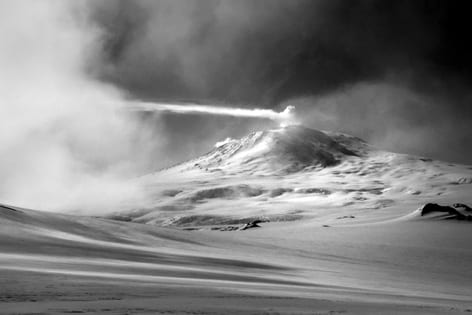South to the pole
UC Irvine chemist Murat Aydin will spend his holiday drilling into the South Pole’s thick ice to collect trapped air that is up to 100 years old.

UC Irvine chemist Murat Aydin will spend his holiday drilling into the South Pole’s thick ice to collect trapped air that is up to 100 years old. His goal: to analyze trace amounts of gases to see how their levels have changed over time.
“It’s almost like studying history – the history of the atmosphere instead of the history of mankind,” said Aydin, an assistant researcher in Earth system science. He leaves Wednesday, Dec. 17, for a three-week trip to an Antarctic research station.
“If you understand how gases change over time, you can understand how they respond to climate changes. That gives you a powerful tool to predict what might happen in the future,” Aydin said. “You can clearly see the impact of industrialization in these gases.”
Aydin and three colleagues will drill two 3-inch-wide holes 120 meters into the firn, the porous layer of ice below the surface snow. The air trapped in the firn gets older as depth increases because new snow and ice accumulates on the surface.
To collect the air, they will pump it from the ice at 16 different depths into glass sampling flasks, which they will bring back to UCI for analysis.
In the laboratory, Aydin and colleagues will test the air for levels of:
- Ethane, propane, and butane, which predominantly are products of natural gas. Evidence in the Northern Hemisphere indicates that levels of these gases have declined over the past 20-30 years. Aydin hopes to determine if this also is the case in the Southern Hemisphere.
- Carbonyl sulfide, the most abundant sulfur gas in the troposphere, which helps form the stratospheric sulfate layer and affects the Earth’s climate. COS is emitted from the oceans, volcanoes, biomass burning, as well as industrial activities. A previous UCI-National Oceanic and Atmospheric Administration collaboration showed that levels of this gas have decreased since the 1980s. Aydin wants to confirm previous findings and determine if this trend is continuing.
- Methyl bromide, a pesticide that was banned under the Montreal Protocol in the late 1980s because it damages the ozone layer. Aydin’s analysis will help show how the ban has impacted levels of this gas in the Southern Hemisphere.
This is Aydin’s second trip to Antarctica and first to the South Pole. His first was in 2005-06 doing similar work at a different site.
“The only way you can really see Antarctica is if you are a scientist,” said Aydin, a Turkey native who came to UCI from the University of Miami in 2000. He works in the laboratory of Eric Saltzman, Earth system science professor.
Said Aydin: “This kind of work gives me a unique opportunity to go to places in the world where not many people get to go.”